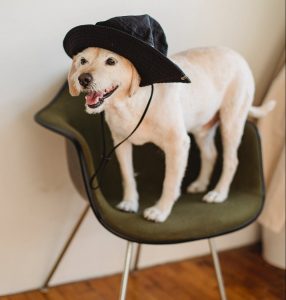What is Alt Text?
Image optimisation CAN make an enormous difference to whether your website ranks at the top of search engines.
Yes, it really does.
Image optimisation can give your post context, break up large blocks of text, and make posts appear more aesthetically pleasing.
They can also increase the SEO ranking of content.
(READ: Google Page Experience Update Set to Launch)
But how do you optimise an image for Google?
Alt text means alt attribute or alt description, indicating a short description that you apply to your website’s images within its HTML, alongside social media platforms such as Instagram and Facebook. The Alt Tag describes what the intention of the image is to crawlers.
Alt text is invisible to your website’s average user, but that doesn’t mean it’s not essential. Between good SEO practices and making your website more accessible, there is so much value that optimising your alt text can add to your website.

(READ: The Customer Value Journey: How to Create a Digital Marketing Strategy)
Alt text for SEO
Image optimisation is highly valuable for SEO. In fact, without alt-text, your images do not affect your SEO ranking. This means that having alt text ensures that your photos are accounted for in Google’s crawl and therefore placed in search engine results.
Google’s bots are highly effective in crawling text, identifying keywords and headings but can’t recognise visual elements. This is why you need to have text associated with a picture in a descriptive, relevant way to contribute to your ranking.
Alt text for Accessibility
Alt text also makes your website more accessible to anyone who visits it. Many people will hardly ever see the alt text, however, your visually impaired audience rely on it to have a comprehensive understanding of what they interact with on your site.
Many of the ‘text to talk’ programs used by visually-impaired people also grapple as much as Google to understand the context of an image with an alt text description.
Let’s say you’ve written an article for your website. Let’s suppose the article is made up of images and other visual elements, such as photos. In that case, you need to make sure that everyone can interact with the article. Without appropriate alt text, you are leaving out an entire chunk of your potential readers, doing them and yourself a disservice.
(READ: Caffeinate Digital Spills the Beans with Brownes Dairy)
As a Backup
Last but not least, there is another way alt text can help you out. When it comes to technical failures, alt text can save you.
Loading issues, internet connection, you name it, it’s possible that images won’t load sometimes. When an image fails to load, text for an image will occasionally pop up in its place, so you can still get across the point you were trying to make. Sometimes things go wrong, so having alt text in place when things go wrong is essential.
Tips to Maximise Alt Text
1. Ensure all images on your website have an alt text description, even if it is just a few words. That will help tremendously in helping to BOOST YOUR SEO.
2. Make your alt text descriptive. You usually have about 100 characters to work with when creating a description for an image.
3. Only describe the image. Don’t try to add unnecessary words to your alt text. It would help if you contextualised the picture with the rest of the article within the copy, not in the text description.
4. Use keywords. This is the better way to help your images rank. Including your keywords, your alt text shows Google’s crawlers that, yes, this IS enriching and engaging information.
(READ: Read This Before Building Your Website)
Caffeinate Tip: Your chosen keyword should fit into your article at least 5-7 times as well as in images.
You might be asking how do I write alternative text for a photo effectively?
Have a look at this image as an example.

You could write “dog in a hat”, and that would be correct. But optimising alt text is all about describing what’s happening to someone who couldn’t see it. So “dog wearing a bucket hat standing on a green chair” would be a more accurate description of what is happening in this image.
So there you have it, you’re now an image optimisation pro and can integrate it with your web design and marketing to have a leg up on the competition.
(READ: 30 Gmail Keyboard Shortcuts That Could Save You HOURS)
SOURCE: DigitalMarketer
We want to hear from you! Follow us on LinkedIn, Facebook and Instagram to keep up with us, get our notifications and start a conversation!


 Level 28, AMP Tower, 140 St Georges Terrace, Perth WA, 6000
Level 28, AMP Tower, 140 St Georges Terrace, Perth WA, 6000  +61 8 6244 0022
+61 8 6244 0022 

